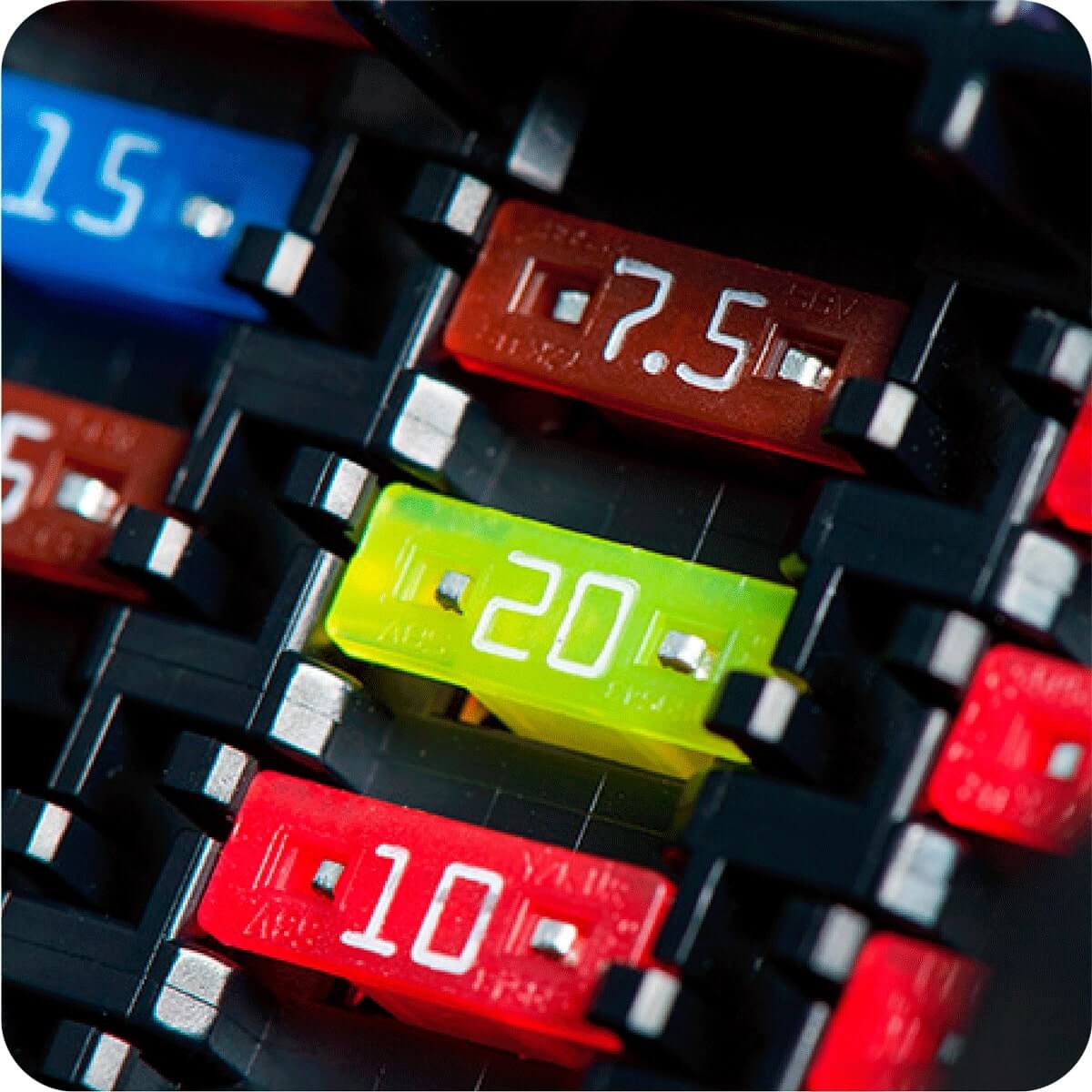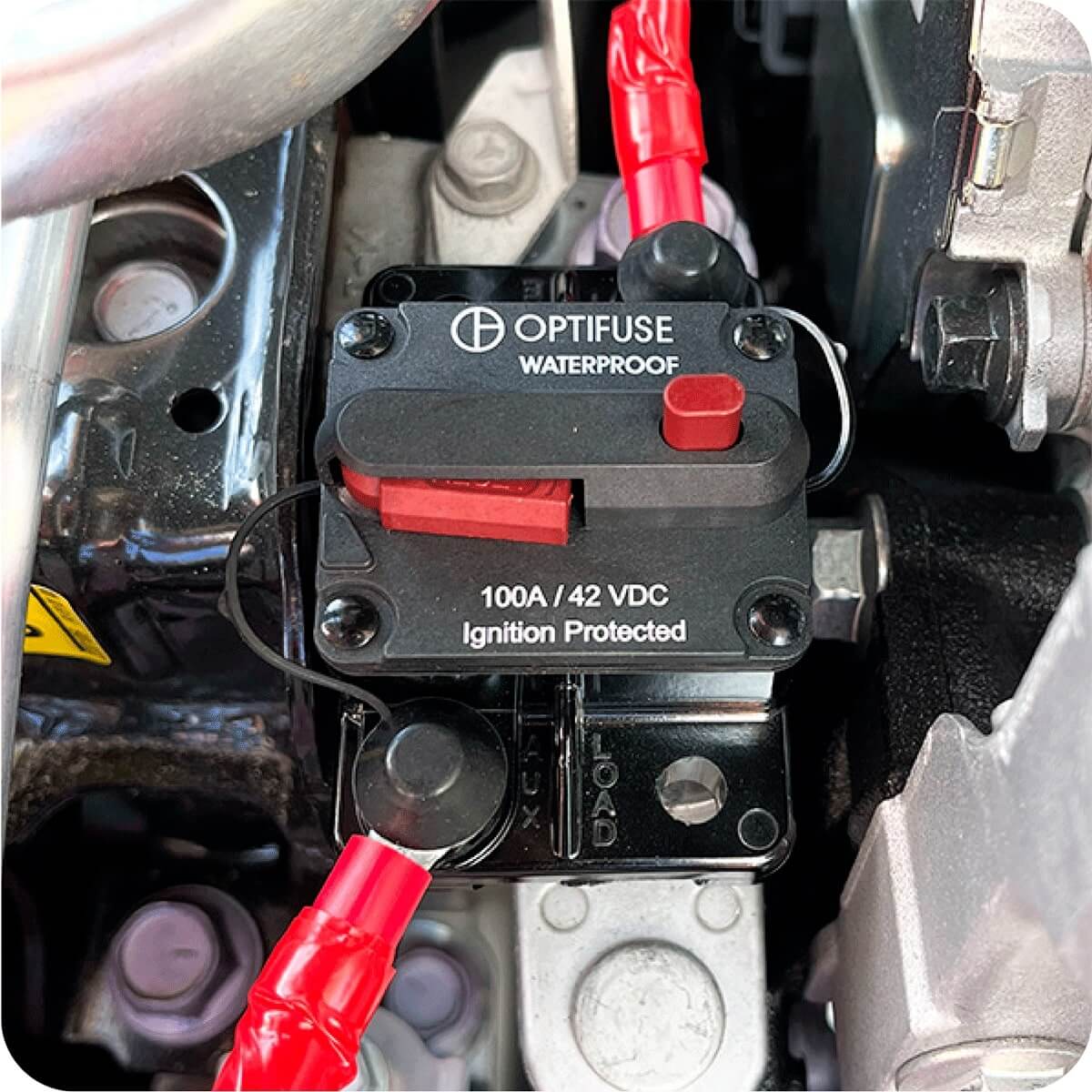In-line glass fuse holders manufacturer and distributor
Discover our selection of In-line glass fuse holders
In-line fuse holder for glass and ceramic fuses: What is it?
An in-line fuse holder for glass and ceramic fuses, also known as "tube" fuses, is a protective component designed to house these cylindrical fuses. It provides crucial overcurrent and short circuit protection in electrical circuits. The fuse holder is integrated directly into a wire or cable, placing the fuse "in-line" with the circuit it safeguards. This design allows for seamless integration and quick access to the fuse without needing to remove the holder from the circuit during maintenance, making it a convenient solution for protecting electrical systems from damage.
Features and design of in-line fuse holders
Some key features of in-line fuse holders include flexible connection capabilities, allowing them to be easily integrated into various wiring setups; unique sizing for each cylindrical fuse size, ensuring proper fit and functionality for specific fuse types; customizable wire gauge, length, and color, offering versatility to match different application needs; and weather protection on certain models, providing safeguarding against environmental elements like moisture and dust.
Their compact design allows for flexible installation in tight spaces, all while allowing easy fuse replacement without the need to remove the holder from the circuit. These features make in-line fuse holders both adaptable and reliable for a wide range of electrical systems.
Common applications of in-line fuse holders for glass and ceramic fuses
Common applications of in-line fuse holders for glass and ceramic fuses include consumer electronics and household appliances, where they provide essential overcurrent protection for devices such as power supplies, audio equipment, televisions, and kitchen appliances, as well as various small electrical gadgets.
These fuse holders ensure safe operation by preventing damage from electrical faults, thereby enhancing the reliability and longevity of these devices. Their compact design makes them ideal for integration within the tight spaces often found in many consumer products.
FAQs
Do these fuse holders meet any regulations or standards?
Depending on the model, these in-line fuse holders may be UL recognized, indicating they have undergone rigorous safety testing by Underwriters Laboratories to ensure compliance with specific safety standards, or weatherproof, offering protection against environmental elements such as those related to temperature and moisture resistance (e.g., IP ratings for ingress protection).
To learn more about which fuse holders have these specific ratings, please reach out to your local OptiFuse sales representative or contact our headquarters directly for detailed information.
What voltage rating do these fuse holders support?
Depending on the model, OptiFuse in-line fuse holders support voltage ratings of up to 500VAC and 100VDC. This range ensures compatibility with a variety of applications, making them suitable for both alternating current (AC) and direct current (DC) circuits.
Can you touch a fuse with your bare hands?
Before replacing or inserting a fuse into your circuit, it is recommended to turn off the power of your device to ensure that you do not run the risk of getting shocked. However, as an added layer of protection, OptiFuse in-line fuse holders are designed to only allow access to the fuse once the connection to the circuit is broken.
To physically remove the fuse, you must remove the cap of the fuse holder, which breaks the connection in the circuit and prevents the risk of electrical shocks. This design enhances safety by ensuring that the fuse can only be accessed when it is safe to do so.
How are these fuse holders mounted?
In-line fuse holders are typically integrated directly into the wiring of the circuit. This involves connecting the fuse holder in series with the circuit it protects. To install an in-line fuse holder, first cut the wire in the circuit you want to protect. Connect the wire leads of the fuse holder to each side of the cut wire, ensuring a secure connection. Once connected, insert the appropriate fuse into the body of the fuse holder, which will serve as the circuit protection for that circuit.
Can I solder a tube fuse?
Yes, you can solder a tube fuse with pigtail leads (such as the "-P" version from OptiFuse) directly onto a PCB (printed circuit board). These pigtail leads are specifically designed for this purpose, allowing for a secure connection while maintaining the fuse's functionality.
What is the lifespan and durability of these fuse holders?
Fuse holders do not have a set shelf life and should function effectively as long as there are no external issues, depending on factors such as material quality, environmental conditions, and electrical load. Regular maintenance and inspections can help ensure that both fuse holders and blocks remain safe and functional.
If you do start to notice deformations or wear and tear on the wires or body of the part, it is recommended that you replace the fuse holder with a new one to ensure that the electrical characteristics remain unchanged.
See also

Fuses
Many styles of innovative, versatile fuses are available to protect circuits from dangerous overcurrents in automotive, electronic, and industrial applications.

Circuit Breakers
A comprehensive range of automotive, marine grade and line voltage circuit breakers to protect applications where resettability is needed.